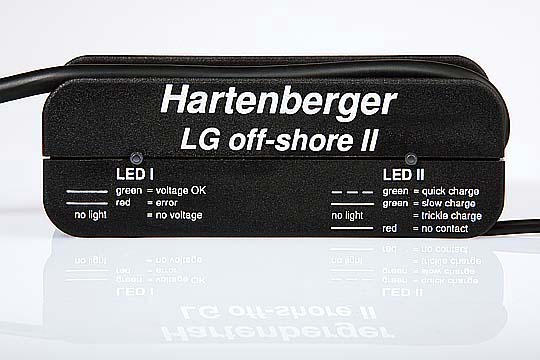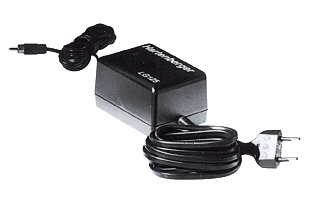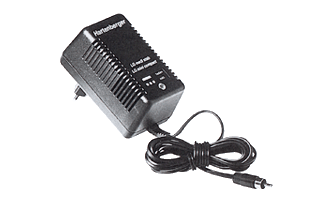Background
information about NC-Akkumulatoren
Nickel Cadmium and Nickel Metal Hydride cells are generally accepted
as being gas tight. It is for this reason that the cells can be charged
in any relative position as no electrolyte will leak from the cells.
However, no manufacturer that we know of will guarantee
this feature for the entire expected life of the cells! An over-pressure
may be produced during the charge or discharge cycles, which may open
the integral pressure relief valve.
This means that electrolyte or hydrogen gas may escape from the cells.
The electrolyte is an aggressive alkaline and it conducts electricity,
this may result in damage of the cells due to electrolytic corrosion.
The leaking hydrogen gas will combine with oxygen
in the atmosphere and produce a highly explosive mixture. The dangers
resulting from such a reaction are obvious to all. A cell the size of
a standard D battery can produce up to 25 litres (approx. 1 cu. ft.)
of gas. The consequences of this in a small enclosed housing are easy
to imagine.
For this reason, it is important that the cell packs are removed from
the housing during the charging cycle.
Achtung ! Exlosionsgefahr beim Laden im geschlossenen Gehäuse.
Nachzulesen:

Verbraucherschutzinformationssystem Bayern - VIS Produktsicherheit in
Bayern

Fachstelle
für Tauchunfallverhütung FTU
Zürich
A safe life expectancy of the cells can
then be assured. The so called Memory Effect is the common term for
the reduction in the capacity of the cells as a result of charging the
cells in a partially discharged condition. (e.g. A wireless telephone
handset has a battery life of 24 hours, but is replaced on the station
and therefore charged after
3 hours).
The common technique for overcoming this is to fully discharge the cells
before charging. We regard this as being more harmful for underwater
lamps with between 5 and 20 cells.
The constant discharge down to the cut-off voltage limit can overload
individual cells and disrupt the balance within the matched cell pack.
This may result in an individual cell "dropping out". We recommend
that for every 10 to 20 cycles where the cells are partially discharged,
that the lamp is fully discharged until the built in discharge protection
turns the lamp off.
The more often the cells are taken to their minimum capacity, the higher
the strain on the individual cells.



